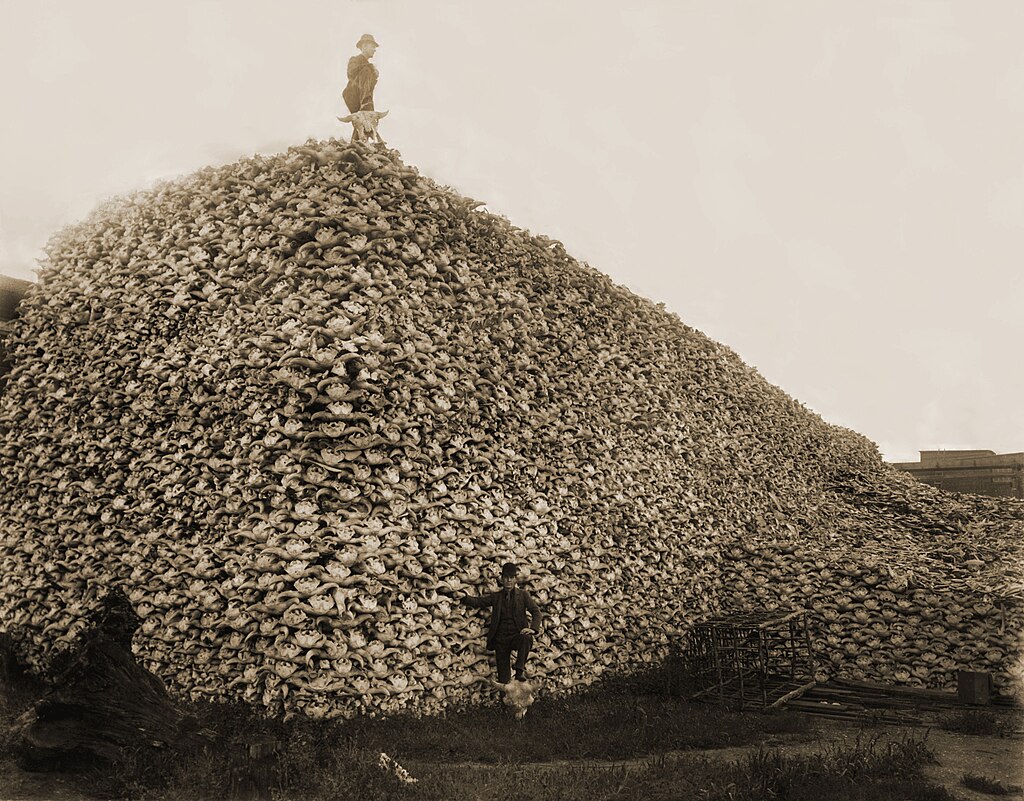
Original distribution of plains and wood bison in North America courtesy en.wikipedia.org.
Fifty million buffalo roamed the North American plains and woodlands before European settlers arrived. From the Yukon to Florida, from New York to Oregon, they wandered the continent. According to Senator Thomas Hart Benton, "The bison paved the way for the railroads of the Pacific." The first thoroughfares of North American were routes tread by countless buffalo and deer hoofs. The Native Indians, especially the Plains Indians, whose diet centred around the buffalo, followed these routes. Later, these paths were used by explorers and pioneers. One such route is the Cumberland Gap through the Blue Ridge Mountains in Kentucky. Another route crossed the Ohio River at the Falls of the Ohio.

Buffalo herd photo courtesy www.sturgisphoto.net.
With the expansion of the United States, more and more pioneers packed up their conestoga wagons and followed the Oregon Trail westward. Some travelled over newly laid railroad tracks. The buffalo became a prime target for hunters who used its hide for leather, its bones for fertilizer and its tongue as a delicacy. Whether on horseback or by train, Americans hunted without limit the buffalo that roamed the prairies. By 1890, the herd had been decimated; only 2000 remained on the continent. The Buffalo storm had subsided and nothing but piles of skulls and tumbleweed remained on the prairie.

Buffalo skull pile circa mid-1870's courtesy en.wikipedia.org.
Note: It is only in the last ten to fifteen years that the North American bison has reappeared, its population estimated at 500,000.
No comments:
Post a Comment